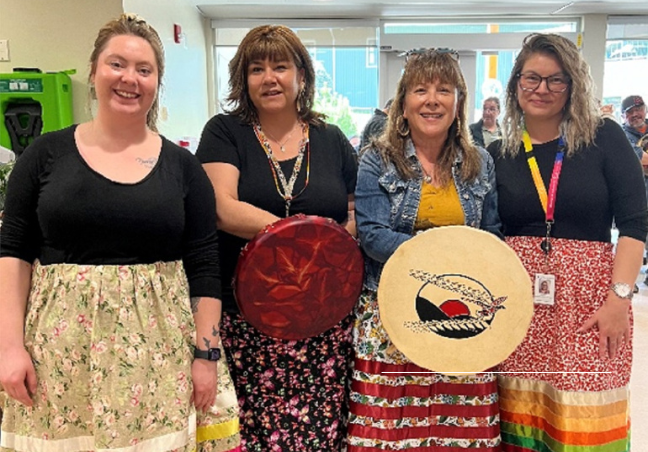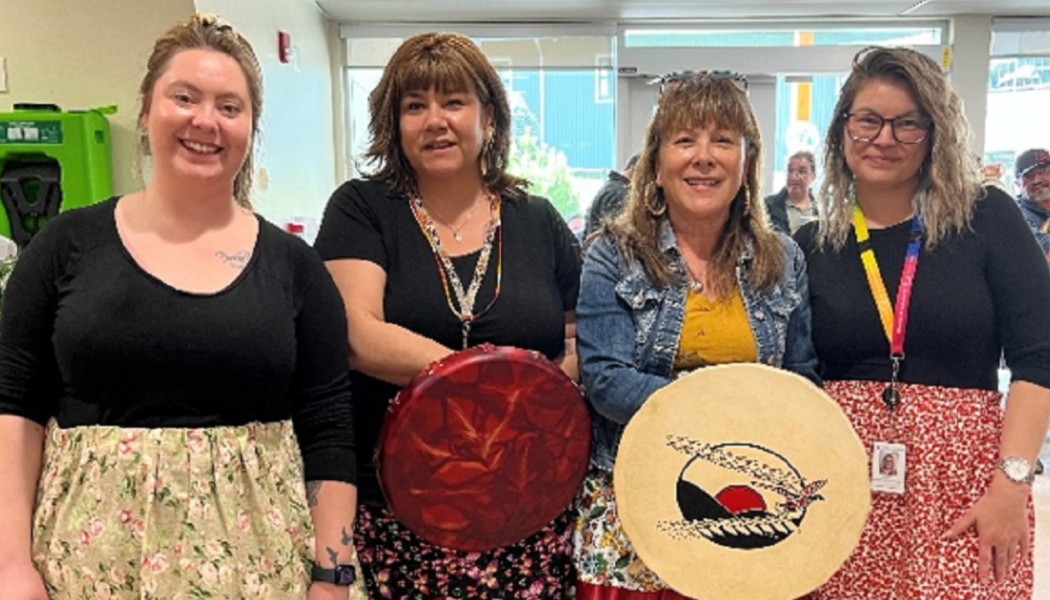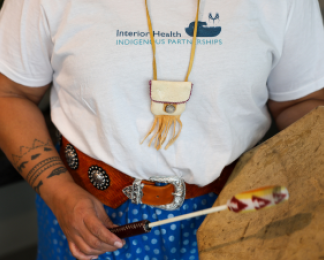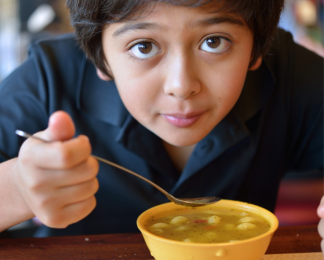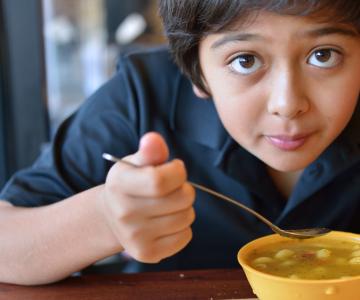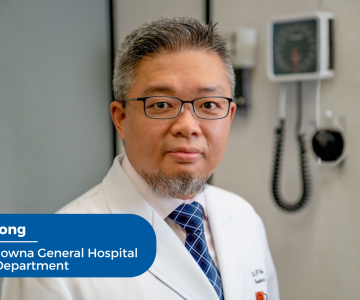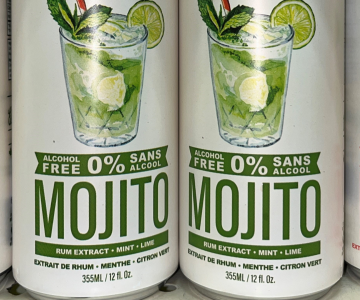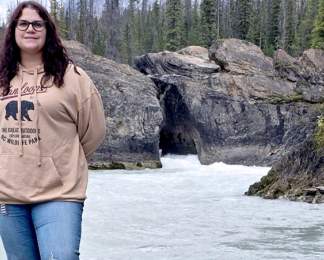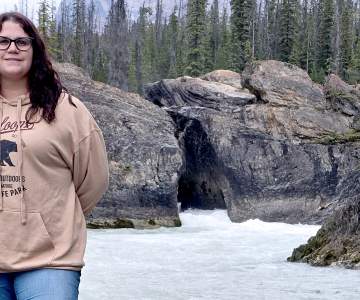Interior Health staff, alongside members from the Tsq̓éscen First Nation Canim Lake community, hosted a smudging ceremony at the 100 Mile House District General Hospital, creating a day filled with cultural significance and unity.
As participants arrived, the sounds of drums and singing from Tsq̓éscen First Nation drummers and singers filled the area. The cultural performance was not entertainment, but integral parts of ceremony that blend healing and tradition.
Elders from the community led the smudging ceremony by first explaining the significance of the smudging practice, a sacred ritual intended to purify and cleanse both the physical and spiritual walks of Mother Earth. The ceremony involves the burning of sage, cedar and sweetgrass. Each person had the opportunity to partake in the smudging as the group moved through the hospital.

